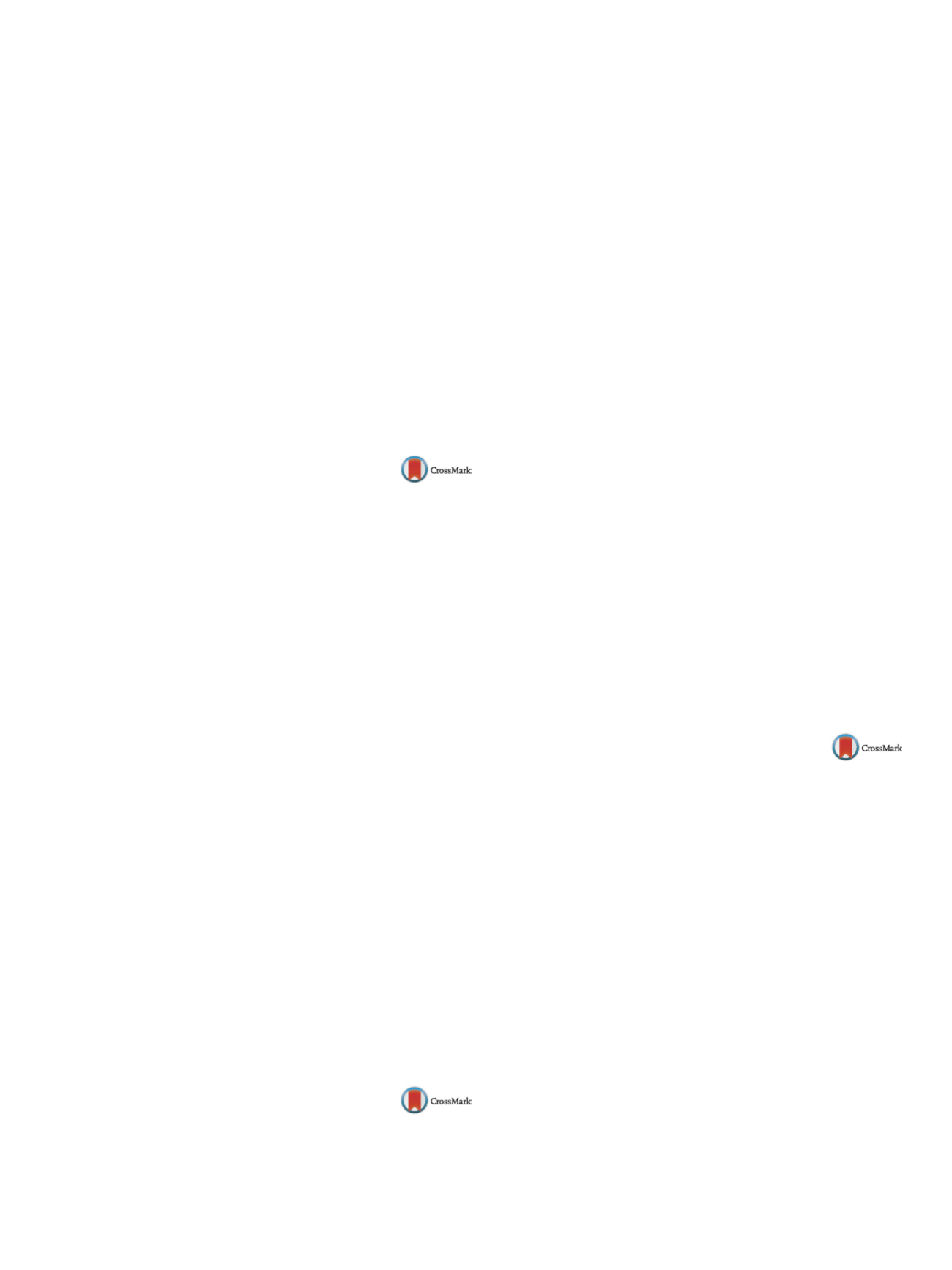

25th European Congress of Psychiatry / European Psychiatry 41S (2017) S772–S846
S779
from the General Hospital of Nikaia, ‘Ag. Panteleimon’, in Athens,
Greece, from 01/01/2012 to 31/12/2015. SPSS software was used to
analyse the data.
Results
There were significant differences between the four
years (2012–2015) with regard to the use of psychotherapy, in
combination with medications, from psychiatric patients as 2
(21): 753.057,
P
< 0.001. More specifically, only 0.1% of psychiatric
patients undertook psychotherapy in addition to taking medica-
tions, in 2012, and this increased to 2.7%, in 2013, 13.8% in 2014
and 18.6% in 2015.
Conclusions
There was an increase in the use of psychotherapy,
in combination with medication taking, during the four last years,
from 2012–2015. However, the percentage of patients undertaking
both psychotherapy and taking medications is still low. This has
important clinical implications as the use of psychotherapy plays a
significant role in achieving optimal health outcomes of psychiatric
patients.
Disclosure of interest
The authors have not supplied their decla-
ration of competing interest.
http://dx.doi.org/10.1016/j.eurpsy.2017.01.1478EV1149
Countertransference in
psychotherapy of paranoid patients
S. Manojlovic
∗
, J. Nikolic-Popovic
University of Nis, Faculty of Medicine, Psychiatry, Nis, Serbia
∗
Corresponding author.
The complexity of psychotherapy is based on the very nature of the
paranoid process. The therapist must not only have a good under-
standing of the paranoid process, but also needs to be especially
careful regarding the transference-countertransference emotions.
Long-standing experience in psychotherapeutic work with para-
noid patients, in the individual and group setting, has enabled us
to systematize countertransference reactions. Dominant projective
mechanisms require a high ability to contain emotions from the
therapists. The most prominent is aggression, in regard to which
the countertransference feelings appear, ranging from aggression
to exposedness, impotence, and victimization. The therapist must
constantly separate feelings which represent his “blind spot” from
thosewhich he perceives as a patient’s part in therapist himself. The
latter countertransference enables the therapist to experience the
internal object of the patient by the mechanism of projective iden-
tification. Beside the aggression, the feelings from the narcissistic
spectrum related to topics of value, competence, rivalling, idealiza-
tion, and devaluation represent a significant countertransference
problem. The countertransference feelings in group psychotherapy
are of lower intensity, and rarely focused on the therapist himself.
In the group, there is also the possibility of significant intensifi-
cation of the projection of aggression, when the whole group is
focusing the projections onto the therapist. In the group milieu,
commonly emphasized countertransference feelings are related to
the position in the group, competence, autonomy, and dependence.
The understandings and way of coping with countertransference
emotions determine the potential for creating the safe emotional
ground in psychotherapy.
Disclosure of interest
The authors have not supplied their decla-
ration of competing interest.
http://dx.doi.org/10.1016/j.eurpsy.2017.01.1479EV1150
Comparisons of narrative
psychotherapy to conventional CBT
for the psychotherapy of psychosis
and bipolar disorder
L. Mehl-Madrona
1 ,∗
, B. Mainguy
21
Eastern Maine Medical Center, Family Medicine Residency, Bangor,
USA
2
Coyote Institute, Education, Orono, USA
∗
Corresponding author.
Introduction
There is ongoing debate about about both the value
of psychotherapy in psychotic disorders and the best type of psy-
chotherapy to use if necessary.
Methods
We conducted narrative psychotherapy with 18 adults,
all diagnosed as having bipolar disorder with psychotic features
and/or schizo-affective disorder. Outcome data consisted of the
Positive and Negative Symptom Scale, the Clinical Global Impres-
sions Scale, the Young Mania Rating Scale, the Hamilton Anxiety
and Depression Scales, the My Medical Outcome Profile, Version
2(MYMOP2), and the Outcome Rating Scales of Duncan and Miller.
We compare the outcomes of our patients to those of a matched
comparison group receiving conventional psycho-education and
cognitive behavioural therapy. Patientswere seen for aminimumof
16weeks over an average of 22weeks. Average age was 31.5 years
with a standard deviation of 8.1 years.
Results
The narrative therapy group showed statistically sig-
nificant reductions in all outcome measures compared to the
conventional treatment group. They continued treatment signif-
icantly longer and had fewer re-hospitalizations. They were less
distressed by voices.
Conclusions
A narrative psychotherapy approach using dialogical
theory and therapy ideas is a reasonable approach for the psy-
chotherapy of psychosis. Review of psychotherapy notes showed
that narrative approaches allowed the therapist to align with the
patient as collaborator in considering the story presented and
was therefore less productive of defensiveness and self-criticism
than conventional approaches. The therapy included techniques for
negotiating changes in illness narratives, identity narratives, and
treatment narratives that were more conducive of well-being and
recovery.
Disclosure of interest
The authors have not supplied their decla-
ration of competing interest.
http://dx.doi.org/10.1016/j.eurpsy.2017.01.1480EV1151
System of integrative psychotherapy
of somatoform and psyhosomatic
disorders patients
B. Mykhaylov
1 ,∗
, O .Kudinova
21
Kharkov medical academy of postgraduate education,
Psychotherapy, Kharkov, Ukraine
2
Kharkiv medical academy of postgraduate education,
Psychotherapy, Kharkov, Ukraine
∗
Corresponding author.
The main goal of the investigation was the integrative psychother-
apy system established. On the basis of the examined 350 patients
with somatoform disorders and 250 patients with chronic psy-
chosomatic diseases, we have elaborated a test that allows to
evaluate quantitatively the influence of the disease on patients’
social functions. We created the integrative psychotherapy system
with cognitive-oriented, suggestive and autosuggestive implemen-
tations. Elucidation of peculiarity of personal perception of the
disease served as basis of elaboration of purposeful system of
psychotherapy, consulting, and psychological support for psycho-
somatic patients with high-effectiveness 1.5–3 years catamnesis
in 85% patients. Psychotherapy should be used first of all as a
target-oriented. Our experience showed the necessity of the use the
integrative models of psychotherapy, parted on stages. On the first
stage, the receptions of cognitive and suggestive psychotherapy are
used. There is group therapy on second stage. On the third stage ele-
ments of the autogenic training mastered. The system examination
high efficacy was shown.


















